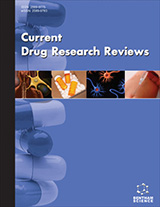
Abstract
Background: Nigella sativa (N. sativa), commonly known as black seed or black cumin, belongs to the family Ranunculaceae. It contains several phytoconstituents, Thymoquinone (TQ), thymol, thymohydroquinone, carvacrol, and dithymoquinone. TQ is the main phytoconstituent present in N. sativa that is used as an herbal compound, and it is widely used as an antihypertensive, liver tonic, diuretic, digestive, anti-diarrheal, appetite stimulant, analgesic, and antibacterial agent, and in skin disorders.
Objective: The study focused on collecting data on the therapeutic or pharmacological activities of TQ present in N. sativa seed.
Methods: Antidiabetic, anticancer, immunomodulator, analgesic, antimicrobial, anti-inflammatory, hepato-protective, renal protective, and antioxidant properties of TQ have been studied by various scientists.
Conclusion: TQ seems to have a variety of consequences on how infected cells behave at the cellular level.
Graphical Abstract
[http://dx.doi.org/10.1142/S0192415X1100941X] [PMID: 22083982]
[http://dx.doi.org/10.1016/S2221-1691(13)60075-1]
[http://dx.doi.org/10.1016/S2221-1691(13)60075-1] [PMID: 23646296]
[http://dx.doi.org/10.1016/j.bcp.2011.09.029] [PMID: 22005518]
[http://dx.doi.org/10.4103/0973-7847.120509] [PMID: 24347919]
[http://dx.doi.org/10.1016/j.drudis.2013.08.021] [PMID: 24001594]
[http://dx.doi.org/10.1016/j.lfs.2009.10.021] [PMID: 19903489]
[http://dx.doi.org/10.1016/S1572-557X(05)02008-8]
[http://dx.doi.org/10.2478/s11532-012-0114-2]
[http://dx.doi.org/10.1186/1476-4598-13-201] [PMID: 25174975]
[http://dx.doi.org/10.1016/S0014-2999(00)00340-X] [PMID: 10913589]
[http://dx.doi.org/10.1078/0944-7113-00376] [PMID: 14971722]
[http://dx.doi.org/10.1111/j.1365-2621.2006.01417.x]
[http://dx.doi.org/10.1089/acu.2016.1204]
[http://dx.doi.org/10.1016/j.jfca.2005.04.011]
[http://dx.doi.org/10.4314/ajtcam.v8i2.63203]
[http://dx.doi.org/10.5740/jaoacint.11-207] [PMID: 22970569]
[http://dx.doi.org/10.1186/s12906-015-0853-7] [PMID: 22186327]
[http://dx.doi.org/10.1016/0031-9422(88)83062-0]
[http://dx.doi.org/10.1002/ptr.1309]
[http://dx.doi.org/10.1038/nature01322] [PMID: 12490959]
[http://dx.doi.org/10.1208/s12249-012-9899-8]
[http://dx.doi.org/10.1006/clim.1999.4696] [PMID: 10227806]
[http://dx.doi.org/10.1155/2010/823821] [PMID: 20396415]
[http://dx.doi.org/10.3389/fcell.2020.00646] [PMID: 32793594]
[http://dx.doi.org/10.1038/srep42995] [PMID: 28216638]
[http://dx.doi.org/10.1097/MPA.0b013e318279ac1c] [PMID: 23429494]
[http://dx.doi.org/10.3390/pharmaceutics13050677] [PMID: 34066874]
[http://dx.doi.org/10.1200/JCO.2004.01.091] [PMID: 15542809]
[http://dx.doi.org/10.1097/COC.0b013e318054675c] [PMID: 17921715]
[http://dx.doi.org/10.1089/jmf.2005.8.488] [PMID: 16379560]
[http://dx.doi.org/10.1080/10408390902768797] [PMID: 20694927]
[http://dx.doi.org/10.4314/ajtcam.v8i5S.10] [PMID: 22754079]
[http://dx.doi.org/10.1590/S0100-879X2006005000108] [PMID: 17581684]
[http://dx.doi.org/10.1080/10408398.2016.1277971] [PMID: 28140613]
[http://dx.doi.org/10.1093/rheumatology/39.2.122] [PMID: 10725061]
[http://dx.doi.org/10.1016/j.biopha.2019.01.006] [PMID: 30841475]
[http://dx.doi.org/10.1007/s13277-014-2628-z] [PMID: 25238880]
[http://dx.doi.org/10.3960/jslrt.51.77] [PMID: 22104306]
[http://dx.doi.org/10.1016/j.immuni.2010.03.012] [PMID: 20346772]
[http://dx.doi.org/10.1002/ptr.2143] [PMID: 17562570]
[http://dx.doi.org/10.1002/jcb.22884] [PMID: 20872780]
[http://dx.doi.org/10.1016/0049-0172(91)90046-3] [PMID: 1836280]
[http://dx.doi.org/10.1172/JCI36389] [PMID: 18982160]
[http://dx.doi.org/10.1007/s10753-016-0427-y] [PMID: 27561645]
[http://dx.doi.org/10.1007/s10753-013-9737-5] [PMID: 24132662]
[http://dx.doi.org/10.1016/j.foodchem.2008.11.031]
[http://dx.doi.org/10.3923/ijp.2015.757.765]
[http://dx.doi.org/10.1080/10412905.2018.1562388]
[http://dx.doi.org/10.1016/j.lfs.2003.09.047] [PMID: 14969719]
[http://dx.doi.org/10.1016/j.brainresbull.2011.11.014] [PMID: 22155297]
[http://dx.doi.org/10.1186/1746-1596-8-137] [PMID: 26445713]
[http://dx.doi.org/10.1179/1476830514Y.0000000144] [PMID: 25087773]
[http://dx.doi.org/10.3923/ajps.2008.331.333]
[http://dx.doi.org/10.1007/s11095-010-0145-3] [PMID: 20422266]
[http://dx.doi.org/10.1128/AAC.6.2.225] [PMID: 238225]
[http://dx.doi.org/10.1002/ptr.1146] [PMID: 10997492]
[http://dx.doi.org/10.1067/mmt.2001.115261] [PMID: 11416826]
[http://dx.doi.org/10.1056/NEJM200005043421806] [PMID: 10793167]
[http://dx.doi.org/10.3109/13880209309082918] [PMID: 11381824]
[http://dx.doi.org/10.1016/j.phymed.2010.01.002] [PMID: 20149611]
[http://dx.doi.org/10.1016/j.intimp.2012.06.023]
[http://dx.doi.org/10.1016/j.clinbiochem.2008.04.013] [PMID: 18472001]
[http://dx.doi.org/10.1080/10408398.2021.1877107] [PMID: 28195061]
[http://dx.doi.org/10.1007/s11095-008-9668-2] [PMID: 18612803]
[http://dx.doi.org/10.1016/S0300-483X(99)00179-1] [PMID: 10755708]
[http://dx.doi.org/10.5455/njppp.2013.3.14-20] [PMID: 23009987]
[http://dx.doi.org/10.3233/JAD-2001-3111] [PMID: 12214075]
[http://dx.doi.org/10.1093/ajh/hpw055]
[http://dx.doi.org/10.4103/1319-3767.41731] [PMID: 19568521]
[http://dx.doi.org/10.1158/1535-7163.MCT-10-0075] [PMID: 20423995]
[http://dx.doi.org/10.1055/s-2006-933305] [PMID: 16479440]
[http://dx.doi.org/10.1111/j.1476-5381.2011.01442.x] [PMID: 21501145]
[http://dx.doi.org/10.1080/15216549900201153] [PMID: 10092955]
[http://dx.doi.org/10.1007/s11064-008-9702-0] [PMID: 18427986]
[http://dx.doi.org/10.1016/j.etp.2013.07.002] [PMID: 23910425]
[http://dx.doi.org/10.1111/jdv.15728] [PMID: 31166041]
[http://dx.doi.org/10.3390/molecules23071571] [PMID: 29958439]
[http://dx.doi.org/10.1159/000063379] [PMID: 8553988]
[http://dx.doi.org/10.1016/j.envres.2020.110488] [PMID: 33221305]
[http://dx.doi.org/10.1016/j.molimm.2018.07.013] [PMID: 30031280]
[http://dx.doi.org/10.1007/s11064-019-02741-4] [PMID: 30725239]
[http://dx.doi.org/10.3390/polym10020213] [PMID: 30966249]

























